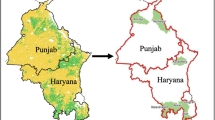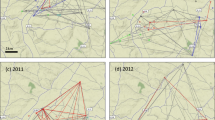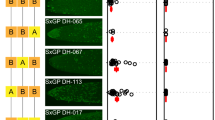Abstract
ALL the three rusts of wheat occur in India. It has been shown that in the plains of India the severe summer heat kills the rust spores and that the wheat crop is infected anew each season by spores blown down from the hills, where wheat is cultivated up to an altitude of about 9,000 ft. above sea-level. The barberry, though common in the hills, seems to play little part in the annual recurrence of black rust1, and it is the self-sown wheat plants and ratoon tillers from harvested plants in the hilly areas which constitute the most obvious means of carry-over of rusts from year to year.
This is a preview of subscription content, access via your institution
Access options
Subscribe to this journal
Receive 51 print issues and online access
$199.00 per year
only $3.90 per issue
Buy this article
- Purchase on SpringerLink
- Instant access to full article PDF
Prices may be subject to local taxes which are calculated during checkout
Similar content being viewed by others
References
Mehta, K. C., Ind. J. Agric. Sci., 3, 939 (1933); Scientific Monograph No. 14, Imperial Council of Agricultural Research, India (in the press, 1940).
Author information
Authors and Affiliations
Rights and permissions
About this article
Cite this article
MEHTA, K., PAL, B. Rust-Resistant Wheats for India. Nature 146, 98 (1940). https://doi.org/10.1038/146098a0
Issue date:
DOI: https://doi.org/10.1038/146098a0
This article is cited by
-
Rust-Resistant Wheats for Egypt
Nature (1941)



